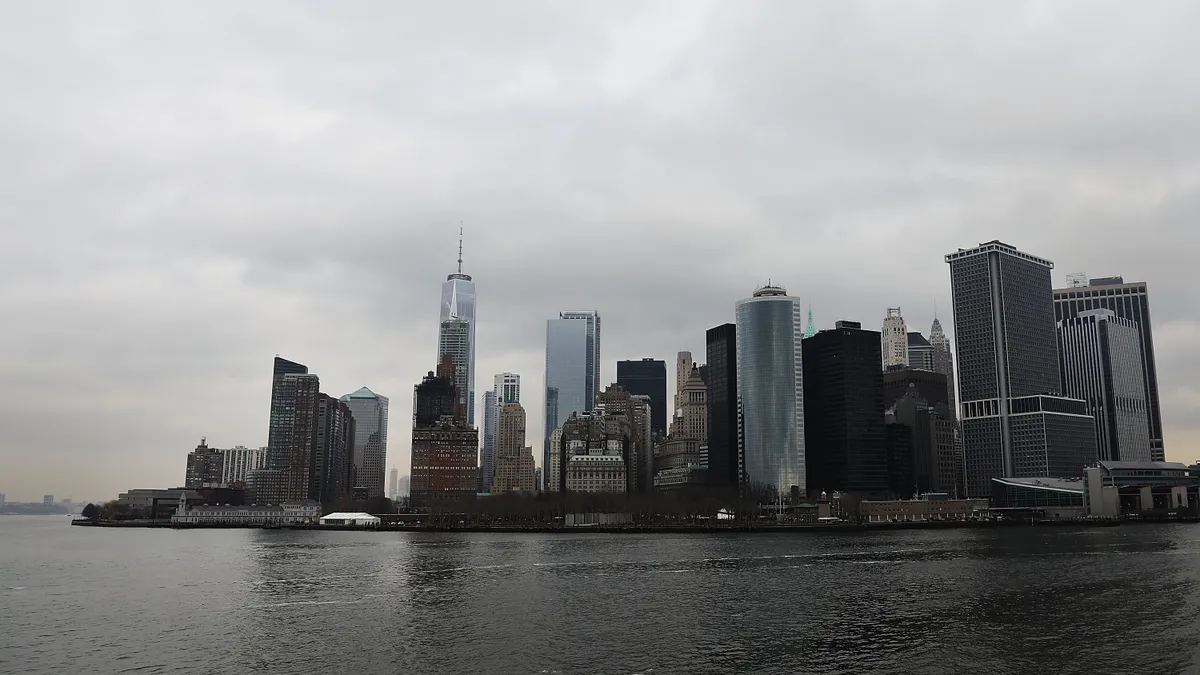Dive Brief:
- Construction spending in one of the country’s largest markets is rebounding from last year’s dip, when non-essential construction paused for 11 weeks due to the pandemic. Construction spending in New York City will hit about $60.6 billion in 2021, up 26% since 2020, according to a new report from the New York Building Congress.
- Compared to pre-COVID-19 levels though, that remains down from 2019 by $1.4 billion, or 2%, in current dollars and $6.4 billion, or 10%, in inflation-adjusted dollars.
- Spending is expected to reach a total $174.1 billion over the three-year period from 2021-2023, declining to $56.8 billion in 2022 and again to $56.6 billion in 2023, according to the report. Still, it's projected to be the second-highest three-year period in the city's history.
Dive Insight:
As COVID-19 continues to impact the construction industry, New York City faces an uncertain near-term economic future, according to the report. Delays in the federal infrastructure bill are also not sparking much optimism, it said.
But Carlo Scissura, president and CEO of the New York Building Congress, remains positive on the outlook for contractors that do business in the Big Apple.
"It will be the second-highest three-year period in the history of New York construction, which is phenomenal," said Scissura. "The highest [level] was the two or three years before the pandemic."
Non-residential nominal spending — which includes office space, retail, hotels, institutional development, entertainment venues and recreational facilities — is expected to fall from $23.7 billion in 2021 to $22.4 billion in 2022, before rising to $25 billion in 2023, according to the report.
But when adjusted for inflation, that spending will likely decrease from 2021 to $20.2 billion in 2022 and then rise to $21.4 billion in 2023. Similar to previous economic downturns, there will likely be a decline in core and shell construction and an uptick in interior renovations, according to the report.

Government spending, now lower than at the height of the Great Recession, is expected to decline to $23.1 billion in 2021, $22.2 billion in 2022 and $21.1 billion in 2023. But Scissura said to expect a more significant bounce back in government spending once the infrastructure bill is finally injected into the economy.
A robust infrastructure bill will greatly benefit the city, which is set to receive billions of dollars, said Scissura. For instance, the federal money will enable the completion of the Second Avenue Subway Station, Penn Station and the Gateway tunnels.
"[A challenge is] ensuring that we have the labor force to meet the needs of the federal money that will come in, and I know that the building trades are working hard to make sure that they have people ready," said Scissura. "It's about just adapting to the post-pandemic world and ensuring that we have the talent and the people to be in New York to do it."

Despite the downtrend in spending, the construction industry could create tens of thousands of new jobs within three years. Construction employment in 2021 is projected to be at its lowest level since 2014, according to the report, but will likely rise in coming years.
"Infrastructure spending is going to be critical and I think that getting New York to really build smart and build resilient and understand the role of climate change and what’s happening, these are really critical items that we need to focus on as we build for the future," said Scissura. "I'm optimistic about that."














